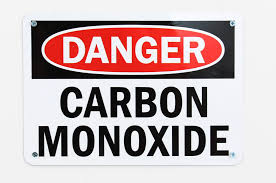Understanding Legal Implications of Carbon Monoxide Poisoning in New York City
 Ten individuals were hospitalized due to carbon monoxide poisoning at a residence on Roosevelt Ave. This event underscores the silent but deadly threat posed by carbon monoxide (CO) in urban dwellings. Carbon monoxide is an odorless, colorless gas that can cause sudden illness and death if inhaled in large quantities. Properties in New York City are not immune to this hazard, making it imperative for property owners, landlords, and tenants to understand their legal responsibilities and rights.
Ten individuals were hospitalized due to carbon monoxide poisoning at a residence on Roosevelt Ave. This event underscores the silent but deadly threat posed by carbon monoxide (CO) in urban dwellings. Carbon monoxide is an odorless, colorless gas that can cause sudden illness and death if inhaled in large quantities. Properties in New York City are not immune to this hazard, making it imperative for property owners, landlords, and tenants to understand their legal responsibilities and rights.
Legal Duties and Responsibilities
In New York City, property owners and landlords are legally obligated to ensure their buildings are safe and comply with local, state, and federal safety standards. This includes installing carbon monoxide detectors in accordance with the New York City Administrative Code, which mandates CO detectors in most residential dwellings. Failure to install and maintain these detectors can result in legal consequences, including fines and liability for any injuries or deaths that occur due to non-compliance.
While the cause of the CO leak On Roosevelt Ave is still under investigation, it is essential to recognize that property owners may face legal action if negligence is found to be a contributing factor.
Legal Recourse for Victims
Victims of carbon monoxide poisoning in New York City have several legal avenues to pursue compensation for their injuries. These include:
- Personal Injury Claims: Victims can file a lawsuit against the property owner, landlord, or other parties if negligence led to the carbon monoxide exposure. Compensation can cover medical bills, lost wages, pain and suffering, and more
- Premises Liability Claims: These claims arise when injuries are caused by unsafe conditions on the property, such as a faulty furnace or lack of CO detectors. Property owners can be held liable if it is shown they failed to maintain a safe environment.
- Product Liability Claims: If a defective product, such as a malfunctioning appliance, led to the CO leak, the manufacturer might be held responsible.
To prevent such incidents, property owners should regularly inspect heating systems, chimneys, and any appliances that could potentially emit carbon monoxide. Compliance with installation and maintenance requirements for CO detectors is not just a legal mandate but a critical safety measure.
As investigations continue, it is crucial for all stakeholders, including property owners, landlords, and tenants, to prioritize safety and adhere to the legal standards designed to protect them.
In cases of carbon monoxide poisoning, affected parties should seek immediate legal counsel to understand their rights and explore their options for seeking justice and compensation. A carbon monoxide poisoning lawyer can provide invaluable assistance in navigating the complex legal landscape, ensuring that victims receive the support and compensation they deserve.
 New York Personal Injury Attorneys Blog
New York Personal Injury Attorneys Blog


